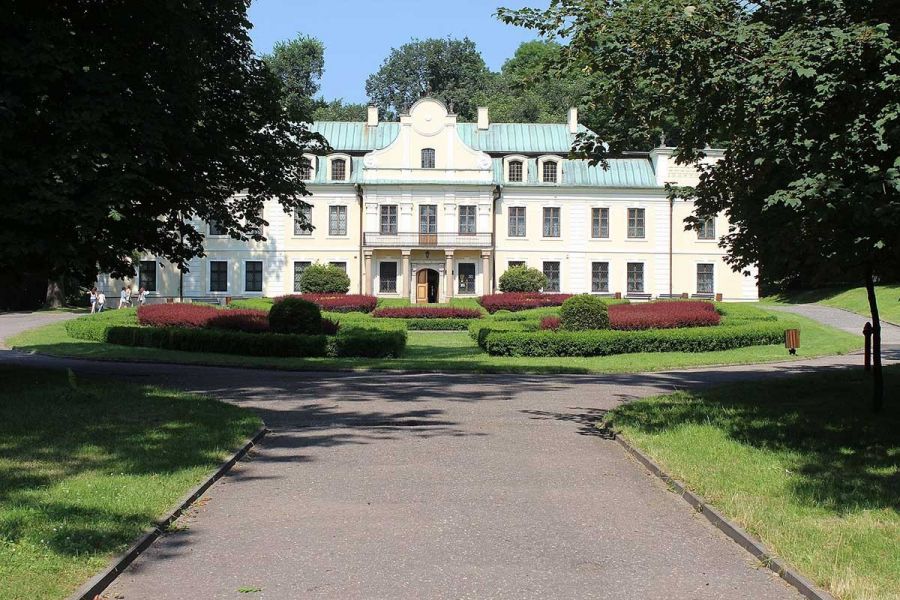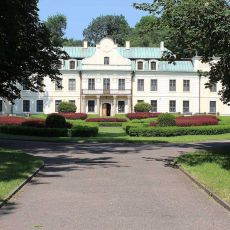Zagłębie Museum in Będzin
42-500 Będzin
Description
At present, the Museum offers the following objects to visit: the Mieroszewski Palace, the Castle and the tower, the House of Prayer "Mizrachi", the revitalized Castle Hill, the medieval city walls and the underground tourist route located under the Castle Hill - Będzin Underground
The Będzin Castle is an example of defensive architecture from the mid-14th century. It was an important link in the defense system of the western Polish border against invasions from the Silesia and the Czech Republic. The original assumption was a free-standing cylindrical tower of final defense, built in the second half of the 13th century. In the mid-fourteenth century, a four-sided tower and a residential building were erected. The whole was surrounded by two circuits of stone walls separated by inter-buoy. In 1834, the castle was rebuilt according to the design by F.M. Lanci, who introduced elements of pseudo-Gothic romantic architecture. From 1956, the rebuilt Będzin castle is the seat of the Zagłębie Museum in Będzin. The collections exhibited in the castle include a collection of old weapons and historical mementos documenting the history of the city.
The baroque-classicistic Mieroszewscy Palace in Będzin - Gzichów is a typical eighteenth-century noble residence modeled on the French palaces. It was erected after 1702, as a symbol of the position and rank of the Mieroszewski family in the Principality of Siewier. The builder of the palace was Kazimierz Mieroszewski - the titular ensign of Fr. sowing, starosta sabranie and podstoli czernichowski. Over the centuries, the palace was beautified and expanded - hence the non-homogenous style. Noteworthy is the interior design, especially the rich eighteenth-century secular polychromy in the representative salons of the first floor. Since 1983, the palace is the seat of the Zagłębie Museum in Będzin. The collections include archaeological, ethnographic and art collections.
House of Prayer "Mizrachi" - founded in the early 20s of the twentieth century on the initiative of the son of the wealthy merchant of Będzin Chil Wiener in his tenement house, formerly colloquially called "Little Będzin" - currently ul. Potocki 3. The name comes from the movement "Mizrachi" (from Eastern Hebrew) - an orthodox faction of Zionism. The iconographic program of the paintings focuses on three thematic themes: landscapes views of the Holy Land, symbols of 12 tribes of Israel and signs of the zodiac. In the years 2010-2011, the renovation of the polychrome was carried out, which restored the room again. Polychromes in the House of Prayer "Mizrachi" were awarded in the competition for the best modernization of 2011 in the category of sacral objects. Since April 2012, the building has been under the care of the Zagłębie Museum in Będzin.
The Castle Hill, which is now a place of recreation, play and education, is just as it used to be an important element of the Będzin landscape. It is in the neighborhood of the Będzin castle, Będzin's suburbs, the reconstructed defensive rampart of the medieval castle and reconstructed half-houses which used to be the economic base for the developing settlement, we commune with the "living history". At the revitalization of the Castle Hill the landscape nature of the park was used, historic alley layout was preserved and 15 "magical places "in the form of circles, each of which has a slightly different character. Since August 2013, the building has been under the care of the Zagłębie Museum in Będzin.
Będziński Underground - built during World War II, most likely, as a shelter for the German population of the city. This is confirmed by the archival photographs found in 2010 from the ceremony of completion of one of the work stages - from August 1944. To this day, in the underground tunnels, there are several objects and traces from the time of construction - so-called. "Witnesses of history": an iron ax, paper bags with cement from 1944, a wagon to export spoil or a scratched inscription on the wall: "SL 1944." In several places in the underground there are fissures of the Będziński Uskoku resulting from the shift of tectonic plates. The museum has been under the care of the Zagłębie Museum in Będzin since August 2013. Recently, the facility has been enriched with a new arrangement, referring to the history of Będzin throughout history ...
Medieval city walls
The foundation of the city walls in Będzin was initiated during the reign of Casimir the Great and was the consequence of the city's location on German law in 1358. The area of the city in the Middle Ages was about 7 ha, while the total length of city fortifications was about 1000 m. Built of stone on the mortar, the walls were an integral part with the castle. They were about 2 m wide. They were crowned with a crenelage, which was preserved fragmentarily. They had several towers, their number and height is hard to determine at present. Only two have survived to this day. The Będzin city walls had two entrance gates: Kraków and Bytom. Under the city walls, the Jewish cemetery was founded from the outside. Since July 2011, the facility has been under the care of the Zagłębie Museum in Będzin.
https://www.muzeumzaglebia.pl/
https://www.facebook.com/MuzeumZaglebia/
Opening hours of facilities: https://www.muzeumzaglebia.pl/zwiedzanie/godziny-otwarcia
Ticket prices: https://www.muzeumzaglebia.pl/zwiedzanie/bilety
Location
Zamkowa 1, 42-500 Będzin











Comments
comments powered by Disqus